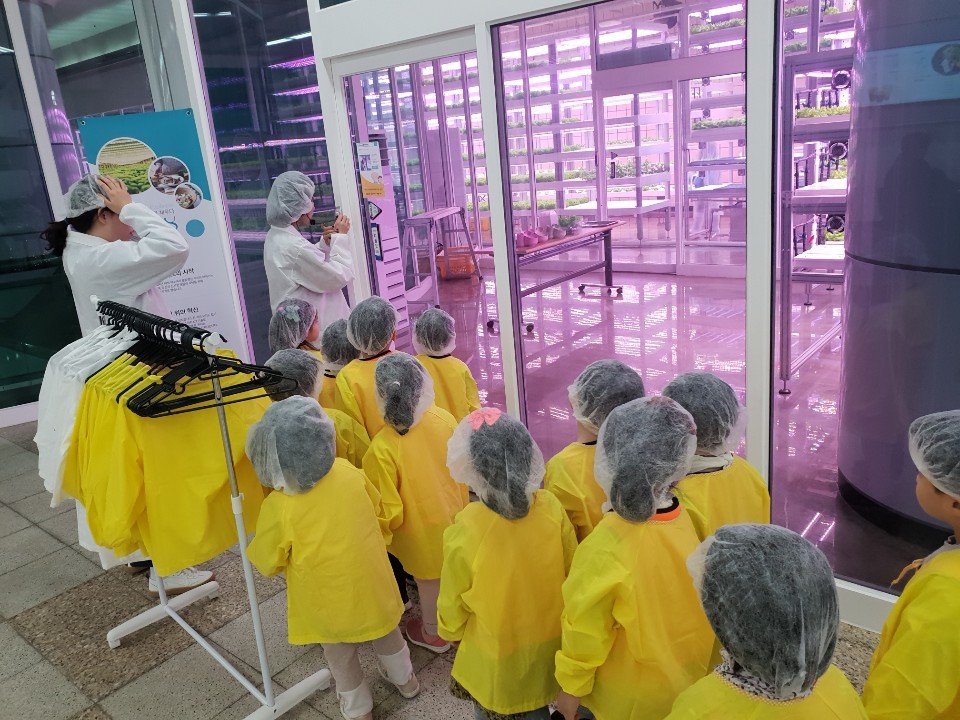Introduction to Korean Agriculture

In South Korea, domestic agriculture production only meets 46% of national food demand, demonstrating the country’s reliance on imported items. Their demand for food products is the United States fifth largest global market, exporting a total of $10.5 billion in just that category in 2021, a quarter of South Korea’s agricultural imports. Out of their total international food imports, $19.3 billion (38.4%) was on consumer-oriented products such as beef, pork, and alcoholic beverages.1 In 2021, food processing plants, of which there were 31,300 at the time, were also heavily reliant on imported ingredients for a total of $20.9 billion and retail food stores such as grocery supermarkets, hypermarkets, and convenience stores made $106 billion, 28% of national retail sales, with online markets continuing to gain traction.1 Shifting to nutritional data, South Korea has one of the lowest global rates for stunting in children younger than five years old with 2.5% of the population affected (regional average 21.8%) and also has a low rate of wasting at 1.2% affected (regional average 8.9%). It’s progress is more limited when it comes to diet-related non-communicable disease targets such as obesity (5.4% of women and 5.2% of men) and diabetes (6.6% of women and 9.7% men), but do again have lower averages than their neighboring countries.2
South Korea has one of the worst grain self-sufficiency ratings in the world. The country’s rate of 19.3% in 2022, 11.6 percentage points below 2000 levels, placed South Korea at the bottom of the 38 member countries of the Organization for Economic Cooperation and Development. For context, the United States has a self-sufficiency rate of 120.1%, Canada 192%, and the neighboring Japan’s rate is 27.3%.3 The pandemic, the war in Ukraine, and India’s wheat export restrictions have all placed significant pressure on the Korean government in recent years to become less reliant on importing grains, especially as prices have skyrocketed due to the greatly decreased supply. In 2021, the South Korean Ministry of Agriculture, Food and Rural Affairs added a prioritization on national food security in their annual business plan stating a focus on developing technology to detect and protect food businesses against international price volatility, increased domestic production of wheat and soybeans, and building more and upgrading existing stockpiling centers to increase capacity in the event of a food crisis. Additionally, the plan included a sustainability section with goals to reduce carbon emissions in the food industry to 19 million tons or less by 2030 with a goal of 100% renewable energy and a focus on livestock and rice farming, both notorious for their heavy emission rates.4
Urban Farming
Now to focus on Seoul specifically. As an urban center, space to grow locally sourced food is limited, meaning that the government and residents have to get creative. One of the ways they’ve done this is by investing in urban farmers. From 2012 to 2020, Seoul built 200 hectares of urban farmland on rooftops and vertically down buildings. Also in 2020, the Seoul Metropolitan Government (SMG) pledged $216 million into programming for urban agriculture to encourage more urban farmers by providing training and acquiring farming space. Increasing urban farming provides a variety of benefits for the city including cutting carbon emissions, cleaning the polluted Seoul air, and providing employment, all while reconnecting residents with nature. The use of collected rainwater and solar power helps to minimize impact and the raising of bees helps foster new city ecosystems by pollinating plants and attracting birds. There are programs specifically to get women and elders more involved as well.5
Hydroponics

Indoor farming is another applied method through increased use of hydroponics and vertical farming. An excellent example of this is Farm8’s METRO Farm collaboration with SMG and Seoul Metro. Located inside Sangdo Station, the 394-square-meter facility includes an “auto-farm,” an automated vertical hydroponic farming system growing eight types of vegetables; FarmX, an educational space where visitors can learn about urban agriculture; and a Farm Cafe where visitors can purchase salads and juices made with fresh ingredients. Once an empty meeting plaza, the conversion to the METRO farm has made urban agriculture visible and accessible to the population.6 Other examples of converted spaces include NEXTON’s vertical farm underneath a mountain along a 600-meter-long tunnel that previously served as a highway, modular CUBE farming with N.Thing, and the use of plant factory system based on ultra-dense cultivation technology by ALGA Farmtech that has three times the yield of other vertical methods.7
Conclusion
These solutions absolutely fit our working definition of sustainability. The SMG and national government seek to lower the impact from specific notorious sectors (landfills, livestock, and rice farming) to lower their carbon footprint and improve and strengthen their communities. Reducing landfills through processing food waste and the creation of sustainable products cause less environmental issues and reduce impact on communities through smell and halved pollution. Jobs are created in Seoul through the development and expansion of urban farming practices, with specific projects and leaders in place to facilitate women and elders at the helm where they are underrepresented. There is still a lot of work to be done in terms of self-sufficiency and nutrition, but Seoul and South Korea as a whole are ahead of the global game when it comes to handling food waste.
To see a list of Seoul’s food related assets (ex: grocery stores and markets), you can view the Seoul Asset Map here.
2Republic of Korea Nutrition Profile. (n.d.). Global Nutrition Report; PATH.
5Barton, J. (2020, October 24). Seoul unveils plan to create 1m urban farmers. CGTN.
7John. (2023, October 19). The Rise of Smart Vertical Farms in Korea – The Future of Farming. Seoulz.